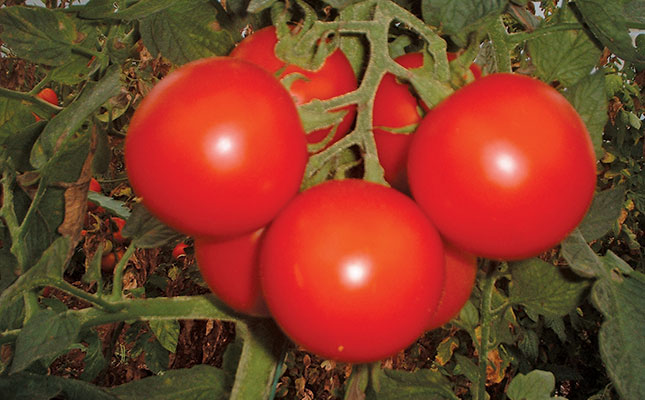
Photo: FW Archive
The heavy rainfall experienced across some of South Africa’s tomato production regions in recent weeks has resulted in a shortage of this produce on the country’s fresh produce markets, and a resultant sharp increase in prices since January.
However, Francois Knowles, registrar at the Agricultural Produce Agents Council (APAC), said: “Our expectation is that the prices will recover in mid-April. The quality of the produce is improving and prices are already starting to stabilise”.
READ Do your homework before starting tomato production
Clive Garret, marketing manager at ZZ2, one of the largest tomato producers in the country, concurred that the current shortage was only temporary, saying that the excessive rainfall received during January and February in Limpopo and Mpumalanga, in particular, had been accompanied by extremely high humidity levels, which had adversely affected the crop.
He added that the rainfall received during the past two months in the Limpopo region, was equivalent to what was usually received for an entire year.
Garret explained that the challenges experienced due to the rain had resulted in a national shortage, as the majority of tomatoes were produced in the northern regions of the country.
READ Common tomato pests to watch out for
He added that the current shortage was mainly of Class 1 tomatoes, which were achieving average prices of around R20/kg on the country’s national fresh produce markets, while the average price across all grades and packaging types was around R15/kg.
Prices averaged about R11/kg in December last year, he said.
On average, around 2 000 pallets of tomatoes per day were being supplied to South Africa’s fresh produce markets, but this had dropped to around 1 100 pallets per day following the unfavourable weather conditions, he explained.
“We are, however, extremely grateful for the rain after the devastating drought we suffered over the past few years, which means that the next year or two will be positive for the market,” said Garret.
Jaco Oosthuizen, RSA Group CEO, added that the heavy rainfall had resulted in difficulties for producers with regard to spraying, controlling insects and harvesting, resulting in quality challenges and a shorter shelf-life for the produce; the net effect of which was constrained supplies.
He added that fresh produce farmers in areas that had been affected by the rain were also struggling with both planting and harvesting, and in addition to tomatoes, there was also a shortage of leafy greens including salad leaves, cauliflower and broccoli.












